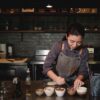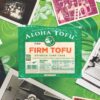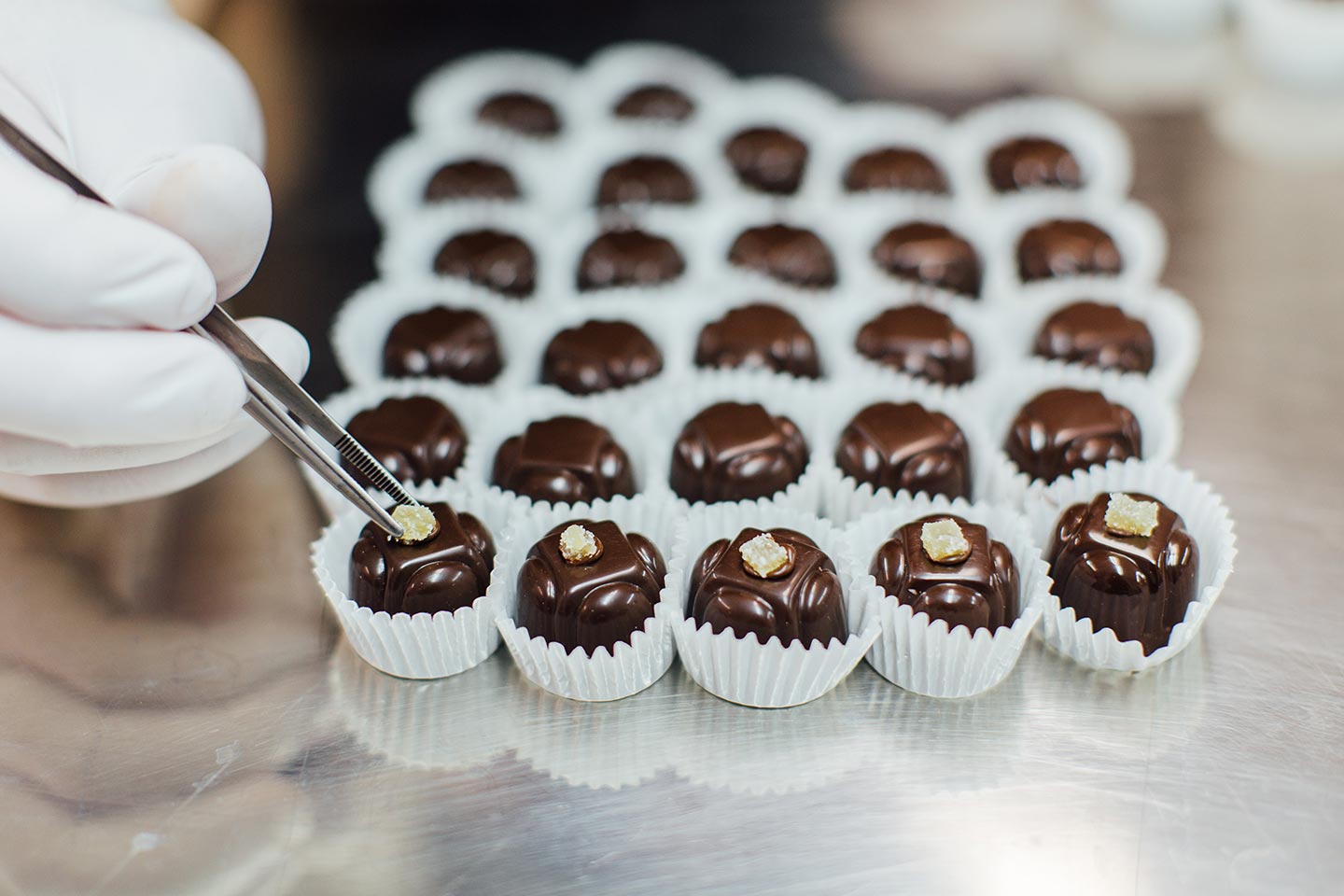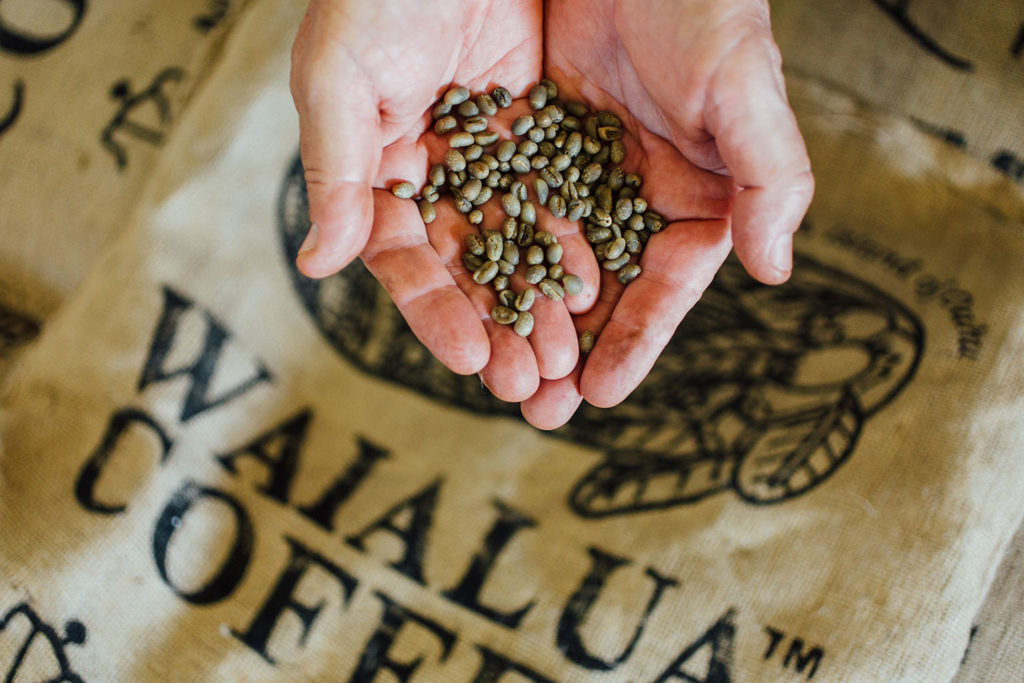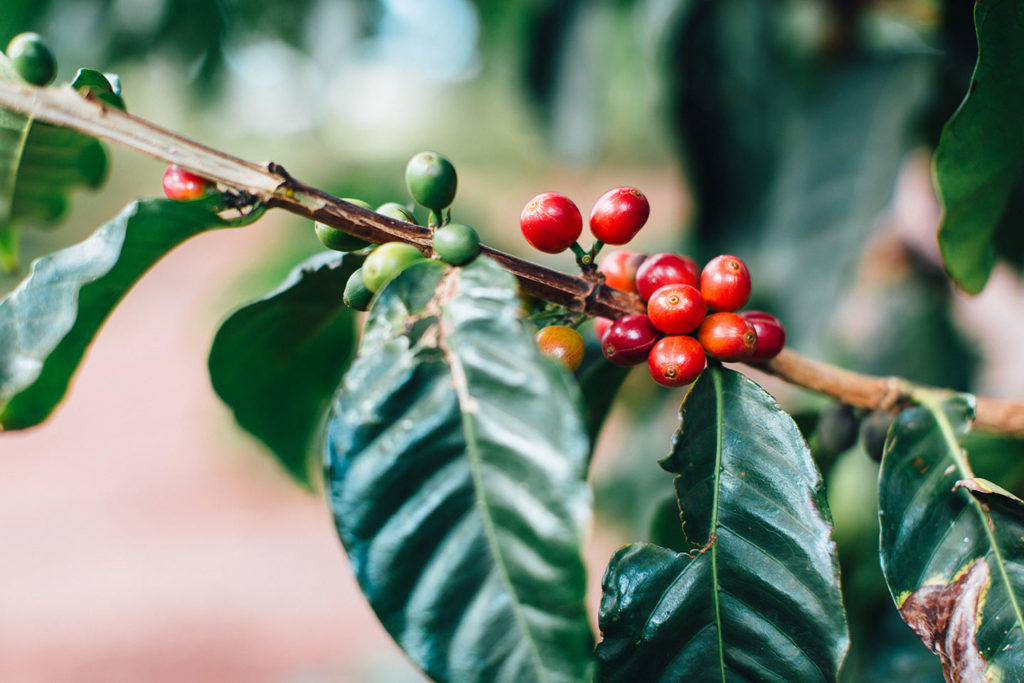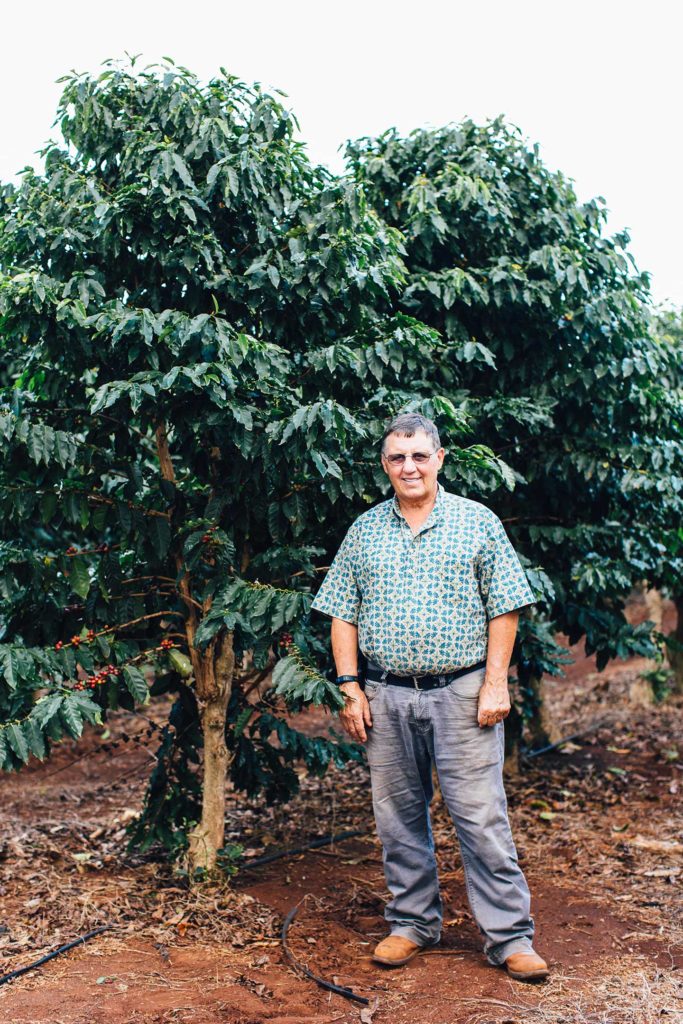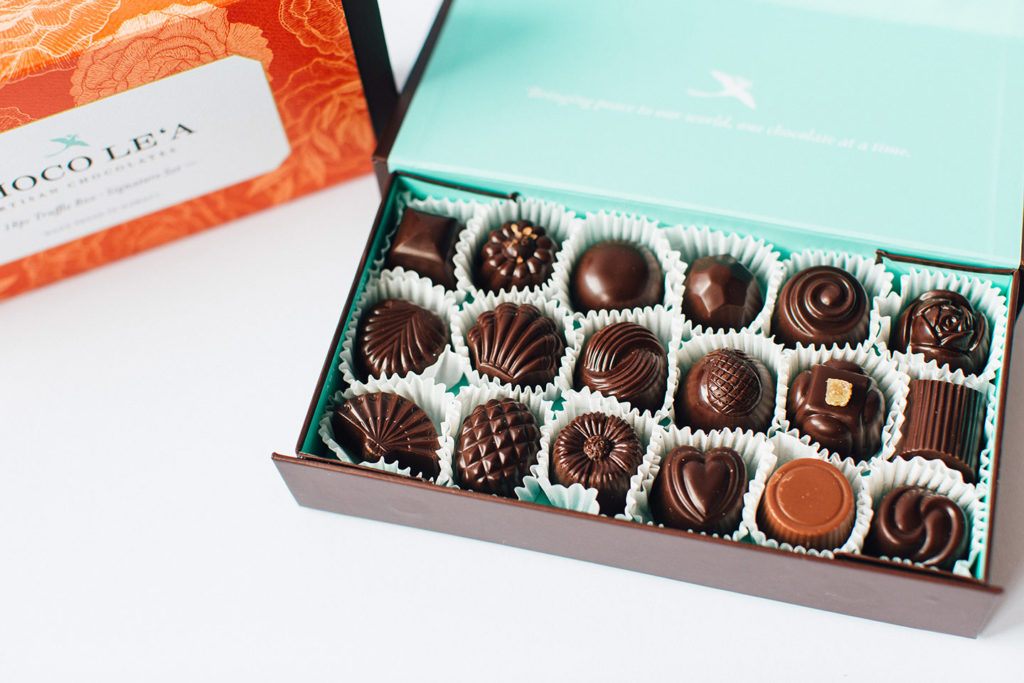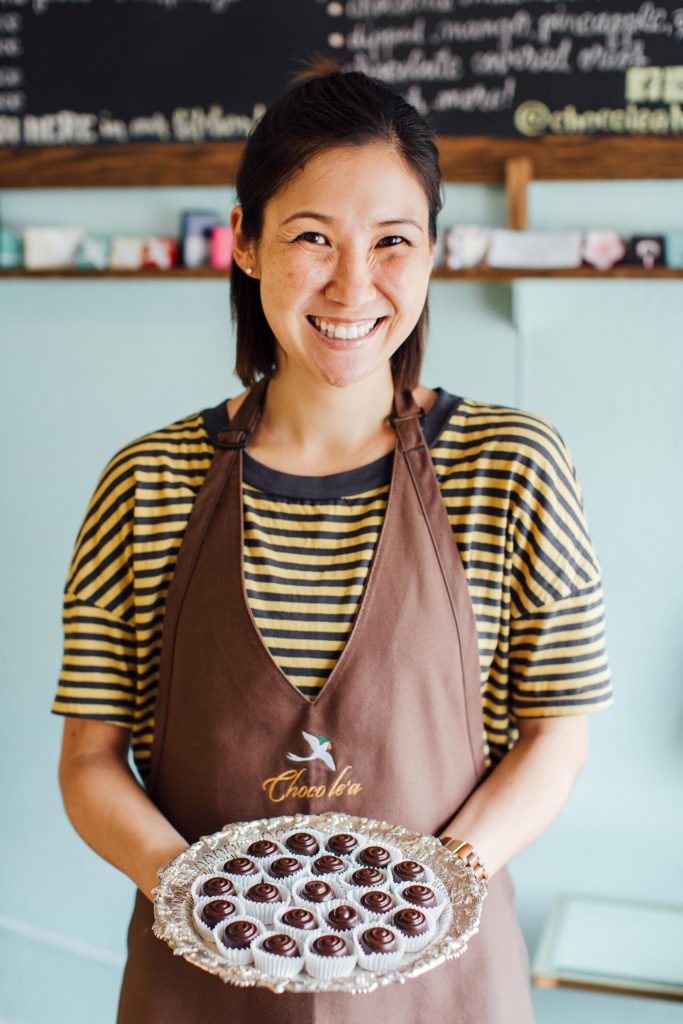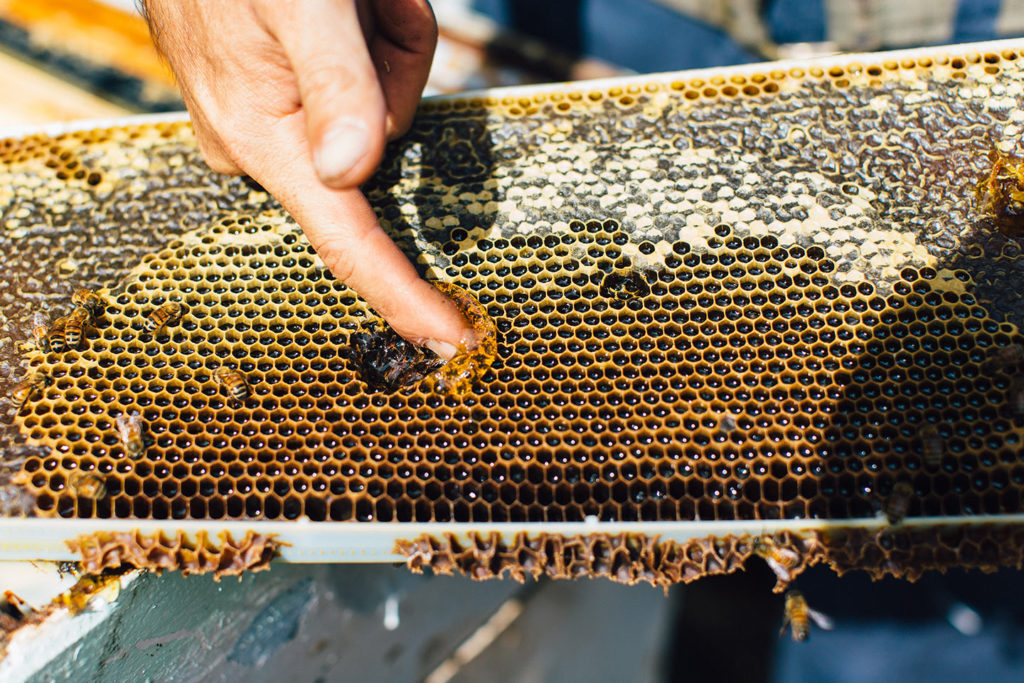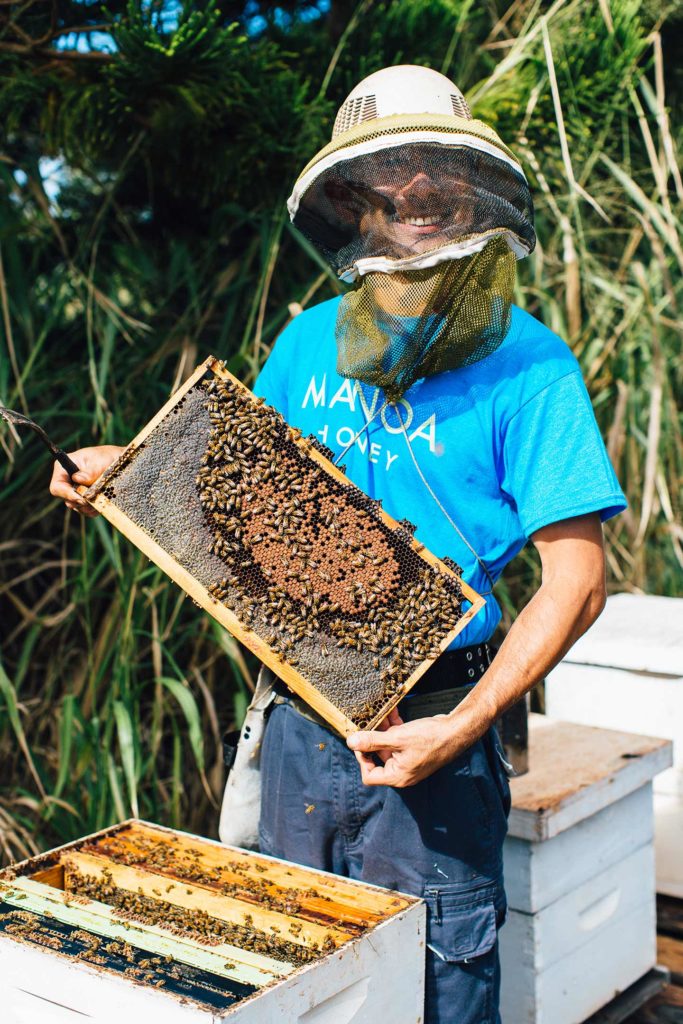Text by Rae Sojot
Images by Meagan Suzuki
From the sandalwood trade and whale oil industries of the 1800s to the sugar and pineapple empires of the 20th century, Hawai‘i has long been a source of prized goods. Today, the state continues its tradition of providing products both exotic and enviable, such as coffee, cacao, and honey derived from the nectar of endemic flowers.
Below, three Hawai‘i luxury food producers—a chocolatier, a beekeeper, and a peaberry coffee grower—share the special stories behind their premium products. Though it’s difficult to pinpoint the source of magic and merit from which these products are grown, harvested, or crafted—some say it’s the tropical surroundings, others point to something more ethereal—all can agree on this: Whether in substance or in spirit, Hawai‘i’s offerings are a celebration of the islands, and therefore unlike anything else in the world.
A Rare Brew
Nestled along the verdant lower slopes of the Wai‘anae Mountain Range, some 155 acres of coffee trees unfold in tidy rows under a wide Hawaiian sky. The Waialua Estate orchards, planted during the late 1990s above O‘ahu’s fabled North Shore, are a delight to behold. Amid branches thick with glossy, deep emerald leaves, jasmine-scented blossoms have since ripened into clusters of bright crimson cherries. A coffee-picking machine, sizable and steely, awaits its operator.
It’s harvest season. Nearby in the processing warehouse, agricultural operations manager Michael Conway is surveying the collection of machinery responsible for the milling, drying, and sorting of coffee cherries that are delivered from the field. Clad in jeans and sturdy work boots, he points to a large pile of burlap sacks, all marked with Waialua Estate’s logo and pleasantly plump with peaberries.
Hawai‘i is one of only two states in the nation (California is the other) where coffee is grown commercially. Though coffee has had a storied history in the islands—especially in the lauded region of Kona on Hawai‘i Island—single source farms like Waialua Estate are quietly emerging as bonafide players in both the local coffee scene and on the worldwide stage.
The same tropical sunshine, tradewind showers, and volcanic soils that crowned the sugarcane industry as king during the last century now informs and influences the distinctive flavor profiles found in Waialua Estate coffee. As coffee aficionados champion climatic conditions or a region’s terroir, Conway offers another measure of excellence: rarity.
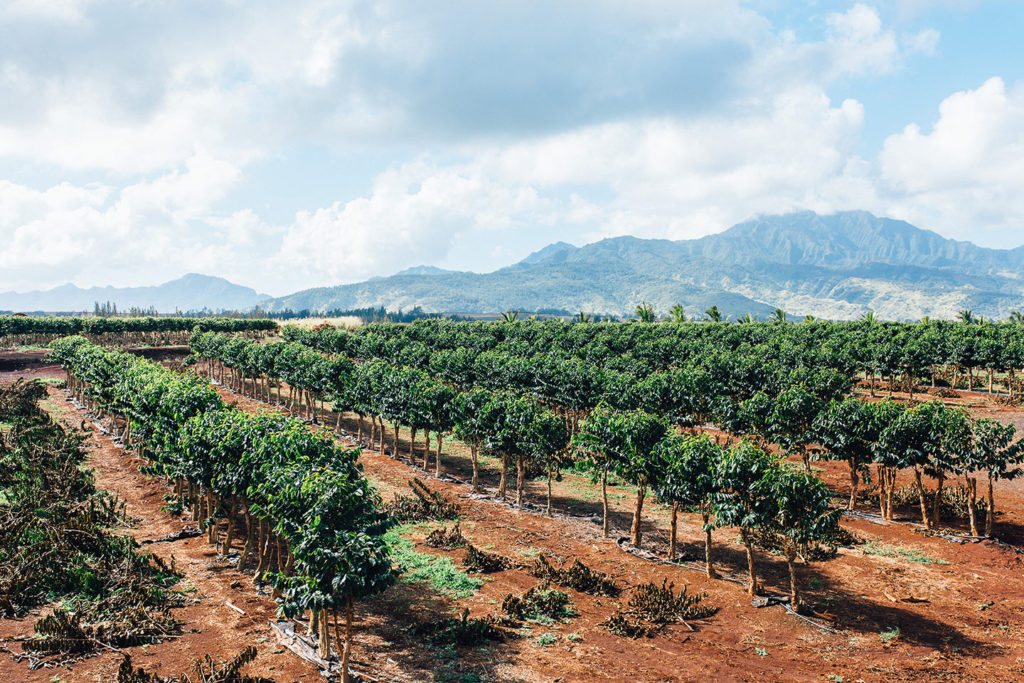
In most cases, explains Conway, a coffee cherry will possess two seeds—the familiar flat, oblong-shaped beans that coffee enthusiasts love and recognize. A peaberry, however, results when the cherry produces only one seed, a single petite and spheroidal bean about the size of an eraser tip. “In a harvest cycle, a tree typically produces a pound of roasted coffee,” Conway says. “Only a handful of peaberries might come from that tree, representing only 1 to 2 percent of that pound.” In other words, peaberries are a scarce commodity.
Peaberry coffee fans believe that the smaller, rounded bean allows for more uniform roasting and spreading of flavor. For Conway, one can indeed taste the difference: For those who enjoy full-bodied coffee, peaberry brews rich and with a trace of chocolate.
Conway allows himself to reconcile both his agronomist side and his romantic side when considering the bean. From a scientific perspective, peaberries are anomalies, biological aberrations. From that of a coffee romanticist, the peaberries’ rare reputation elicits a flash of delight upon discovery. Says Conway of the elusive Waialua Estate peaberry: “It’s like coming across a four leaf clover.”
A Family Tradition
Choco le‘a owner Erin Uehara has a delicious confession: Growing up, when given chocolate gift boxes by friends and family, the young Uehara was notorious for taking a small, deft bite from each individual piece.
But not because she didn’t want to share, she quickly explains, laughing at the recollection. “I just wanted to make sure I got to try them all!”
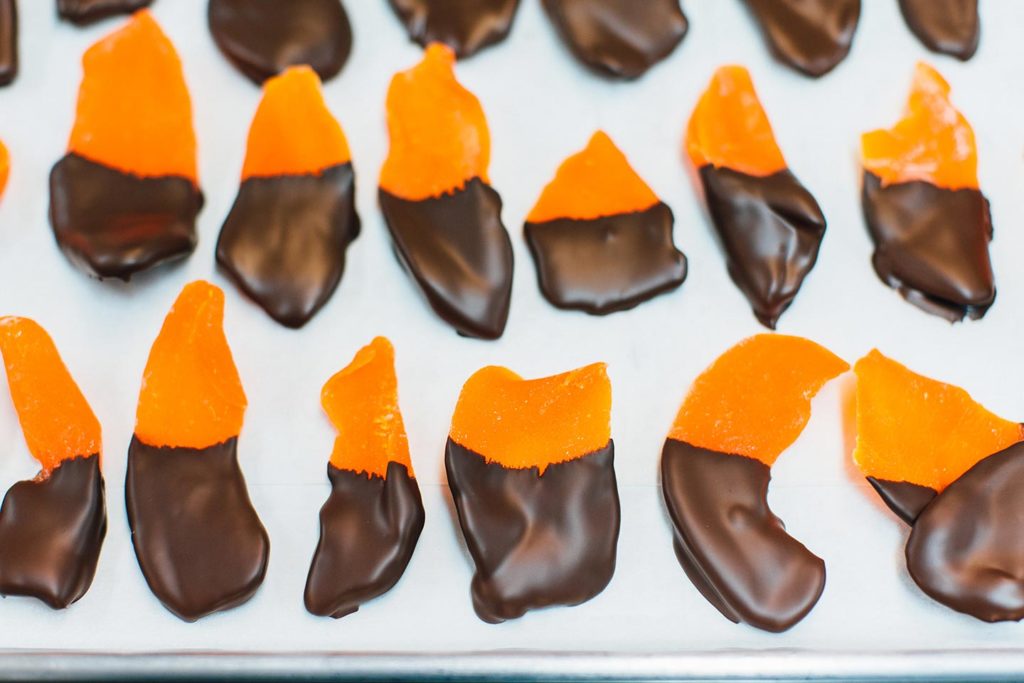
Uehara didn’t set out to become a chocolatier. A passion for dance and an innate desire to help others led her to twin careers as a dance instructor and an elementary school teacher. In 2010, a serendipitous encounter at a bridal show prompted a new life direction.
While sampling truffles at a vendor booth, Uehara began chatting with the confections’ creator, Colins Kawai. Their casual conversation yielded a sweet surprise: Kawai was Uehara’s uncle.
Erin Uehara
“Hawai‘i is not usually thought of as a place that has chocolate. But we’re actually the only state in the U.S. that grows it.”
Over the next few months, uncle and niece reconnected through family stories and bonded over a shared love of chocolate. Kawai, who had been creating his specialty truffles for nearly 12 years, had been hoping for someone to continue the family’s confectionary company.
Taking Uehara, a self-proclaimed chocoholic, under his wing made wonderful if not obvious sense.
Today, Choco le‘a occupies a quaint corner in Mānoa Valley, complete with a tidy white fence and a sunny outdoor seating area. Inside the shop’s glass display case, rows of artisanal chocolates shine like jewels, each piece a marvelous, miniature work of art.
The confections are crafted daily from a blend of European chocolate and Hawai‘i-grown cacao from single-origin farms like Waialua Estate (the same North Shore farm that harvests the exquisite peaberry).
“Hawai‘i is not usually thought of as a place that has chocolate,” Uehara says. “But we’re actually the only state in the U.S. that grows it.”
Uehara and Kawai’s pride for Hawai‘i extends beyond Hawaiian cacao usage, too. Seasonal truffles highlight the bounty of the islands: macadamia nuts from Hawai‘i Island, Kula black raspberries from Maui, liliko‘i from Kaua‘i.
Uehara believes in chocolate’s universal appeal.
“Anyone from any country or any background has probably had some experience with chocolate, and it’s usually good,” she says. “It brings up happy memories.” Such sentiment is reflected in the company’s name: choco is an abbreviated reference to the french word chocolat and le‘a is a Hawaiian term for gladness or joy. “We like to say that we are bringing peace to our world, one chocolate at a time,” Uehara says.
Choco le‘a chocolates are solely made and available in Hawai‘i. For those lucky enough to be on island to try one, the sumptuous treats serve as testimony to Uehara and Kawai’s love for people, Hawai‘i, and of course, chocolate itself. Says Uehara, “We try to show that the aloha spirit really is in what we do … and that you can bring it home with you to share, too.”
The Sweetest Art
For many artists, defining moments in life are what shape artistic expression. For Manoa Honey Company owner Yuki Uzuhashi, those defining moments arrived on the wings of bees. Uzuhashi is first a beekeeper but foremost an artist. Though the sculptor and performance artist had eaten honey throughout his childhood, he considers one particular afternoon especially profound:
During his travels in Jamaica as a young man, he accompanied a Rastafari on a wild honey harvest. The details of that day remain vibrant—the dreadlocked Rastafari draping a loose mesh screen over himself as a makeshift cover, the acrid smoke of burning cow dung, a used plastic shopping bag transformed into a glove, the thrumming frenzy of swarming bees. And then there was the honey itself: deeply hued amber treacle, drawn warm and direct from golden comb into the two men’s eager, sticky mouths.
For Uzuhashi, that singular, visceral moment instantly supplanted all previous experiences with honey—the ubiquitous pasteurized and processed jar offerings found on grocery store shelves. Harvesting raw honey struck a chord within. “It was like I was tasting honey for the first time,” he says.
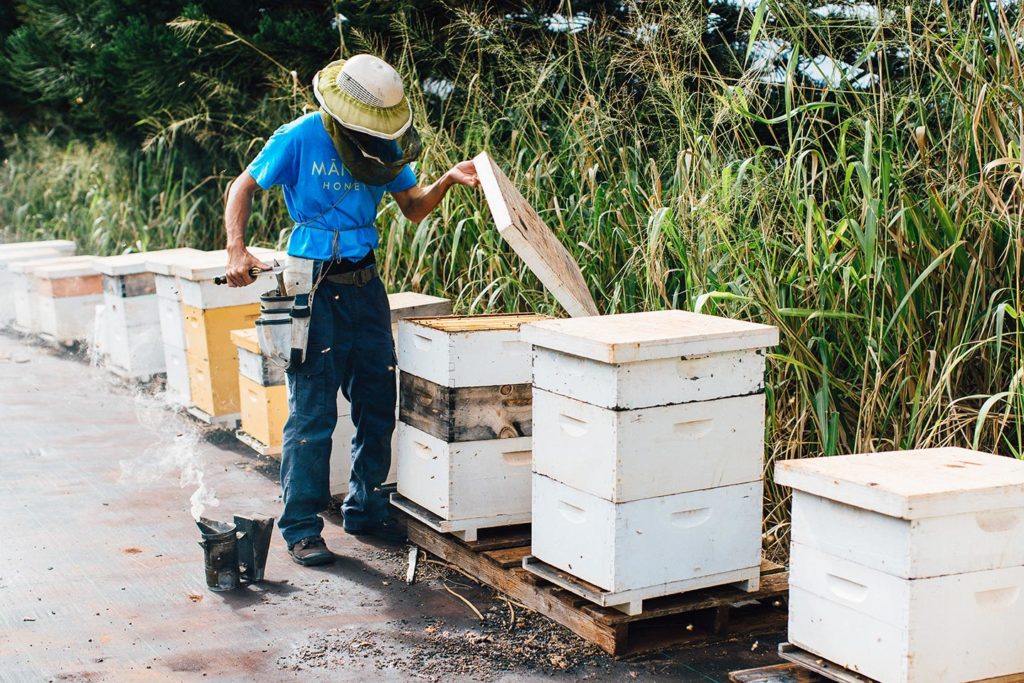
During his final year in college, Uzuhashi was seeking a fresh creative medium when the chord struck anew. He had learned of a small tribe of people who traveled each spring from the southern islands of Japan to Northern Hokkaido, following the blooming path of flowers, and in turn, the bees.
These were the honey harvesters. Uzuhashi saw the migratory movement of the blossoms, bees, and beekeepers as poetry, a wonderful integrated performance set in nature. He decided then that beekeeping would become his life’s expression of art.
In the past 15 years as a beekeeper, Uzuhashi’s respect for bees as a creative muse continues to deepen. Beekeeping, explains Uzuhashi, is an endeavor that requires one tune in to where you are. He marvels at the creatures’ roles as living barometers of the environment—their honey is a reflection of where they roam.
Hawaiian honey is truly special.
“We tend to forget that Hawai‘i is in the middle of nowhere,” Uzuhashi says, noting how the islands’ geographic isolation has enabled the development of unique flora for the bees to gather nectar and produce honey. Flowers from the kiawe, a sturdy mesquite tree that flourishes in the islands’ arid leeward lowland, result in a fine, slightly smoky, white creamed honey. ‘Ōhi‘a lehua, a native forest tree with red and pink blossoms, gives way to a honey golden and buttery, creamy and floral.
These fascinating and complex flavors, along with others, are created nowhere else in the world.
“Hawai‘i is so beautiful with its sunshine and showers and flowers,” says Uzuhashi of how surroundings play a pivotal role in honey production. These elements are then collectively concentrated into liquid Hawaiian gold. Says Uzuhashi of the artful process: “Honey becomes precious.”

